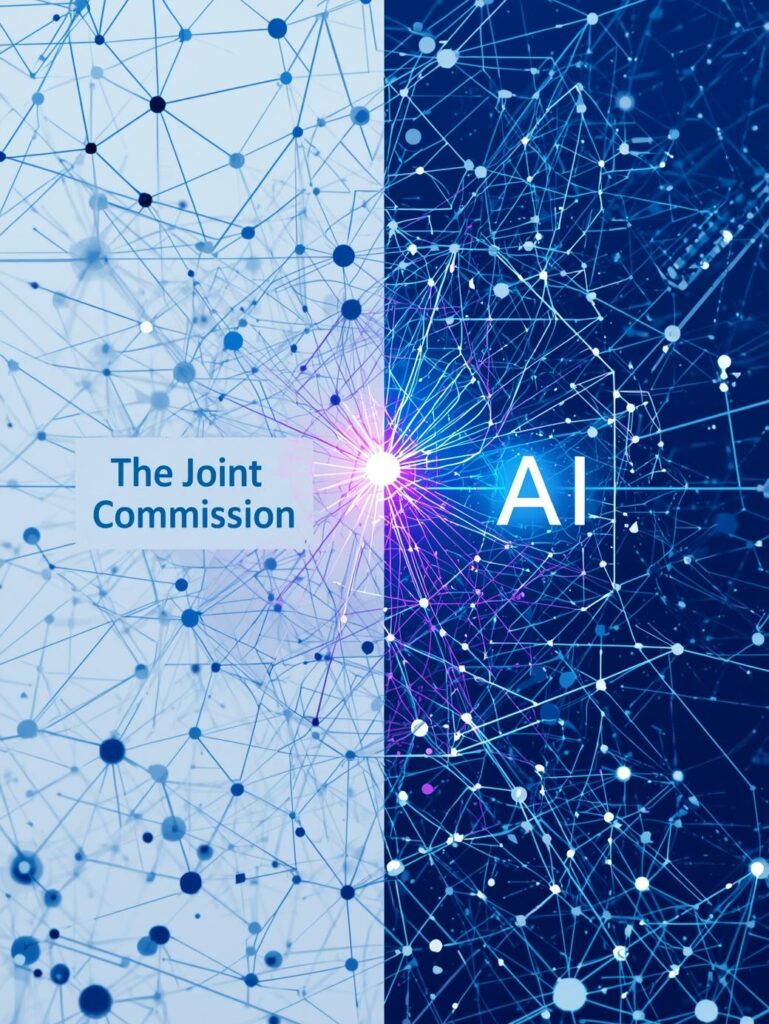Navigating the New Standards: The Joint Commission’s Guidance on Responsible AI in Healthcare
The Promise, and Risk, of Artificial Intelligence in Healthcare
Artificial intelligence (AI) has rapidly evolved from an experimental tool into a defining force in modern healthcare. Its potential is immense: enhancing diagnostic precision, streamlining operations, predicting outcomes, and personalizing care delivery. From documentation automation to predictive analytics, AI tools can drive efficiency and reduce clinician burden.
But with transformation comes risk. Algorithmic bias, data inaccuracies, and “black box” decision-making create new patient safety and ethical challenges. Overreliance on AI can erode human judgment, while data privacy breaches threaten patient trust. As these technologies advance faster than organizational readiness, many health systems face an urgent need for clear governance and training frameworks to manage risk responsibly.
A Joint Framework for Responsible AI Use
Recognizing this gap, The Joint Commission and the Coalition for Health AI (CHAI) have jointly published The Responsible Use of AI in Healthcare (RUAIH) guidance. This collaboration brings together standards bodies, providers, and technology leaders to align on what “responsible use” actually means in practice.
The framework identifies seven pillars critical to safe AI integration:
- Governance and policy oversight
- Patient privacy and transparency
- Data security and ethical data use
- Ongoing quality monitoring
- Blinded reporting of AI-related safety events
- Risk and bias assessment
- Education and training
The goal is not to regulate AI development, but to guide its deployment and operation in healthcare delivery settings. This distinction matters. While the FDA regulates device efficacy, RUAIH focuses on how organizations implement and manage AI tools once they are in use; from procurement and validation to post-deployment monitoring.
The guidance also introduces the idea of “playbooks” and a forthcoming voluntary certification program, both designed to help hospitals operationalize these principles. These practical tools will help translate abstract risk frameworks into tangible workflows that align with Joint Commission accreditation processes and health system safety cultures.

Data Integrity, Privacy, and Security: The Core of Trust
The second and third pillars—patient privacy and data security—reinforce what many compliance teams already know: without trust, AI adoption fails. AI relies on massive datasets, often repurposed or shared across vendors. The RUAIH framework mandates encryption, role-based access controls, data minimization, and explicit prohibitions on re-identification.
Organizations are encouraged to align with the Responsible Use of Health Data (RUHD) framework to govern secondary data use, ensure transparency for patients, and strengthen Business Associate Agreements. Transparency extends beyond compliance, it’s a patient-facing expectation. Hospitals are urged to disclose when AI influences care decisions and explain how patient data contributes to algorithmic learning.
Monitoring and Mitigating Risk Throughout the AI Lifecycle

The fourth pillar, ongoing quality monitoring, is the most operationally demanding, and arguably the most critical. AI systems are not static; models drift as data changes, algorithms update, or use cases evolve. The Joint Commission calls for risk-based monitoring scaled to each AI tool’s proximity to clinical decision-making.
Key requirements include:
- Routine validation and performance testing
- Defined escalation channels for model failures or adverse events
- Dedicated AI dashboards for transparency and oversight
- Defined responsibility between internal teams and third-party vendors
The guidance also proposes a voluntary, blinded reporting system for AI safety events. Similar to sentinel event reporting, this mechanism would allow organizations to share de-identified incident data, supporting collective learning without adding regulatory burden.
Complementing this is bias and risk assessment, a structured process to identify inequities in model design, data, and outcomes. Hospitals are expected to evaluate vendor testing data, assess local population fit, and continually audit results. By coupling monitoring with transparent reporting, health systems can reduce harm and support continuous learning
Building AI Literacy and a Culture of Safety
Finally, sustainable AI integration requires workforce readiness. The RUAIH guidance emphasizes education and training, not just for IT or data science teams, but for clinicians, administrators, and executives. Staff must understand how AI tools function, their intended uses, and their limitations.
Training programs should establish a shared vocabulary around AI, define ethical use parameters, and outline escalation processes for suspected algorithmic errors or bias. When clinicians are confident in both the benefits and boundaries of AI, adoption becomes safer, faster, and more effective.
Ultimately, this guidance is a call to action: hospitals must embed governance, transparency, and training into every phase of AI adoption. For healthcare organizations already accredited by The Joint Commission, or pursuing accreditation, RUAIH provides a roadmap for aligning innovation with safety and ethics.
Transform Your Vision Into a Thriving Behavioral Health Organization
The path to building a successful behavioral health organization isn’t about luck; it’s about precision, foresight, and the right partners at your side. At Atlantic Health Strategies, our team of executives and operators works alongside you to translate vision into reality. We guide mental health, substance use, psychiatric and eating disorder providers through every layer of operational and regulatory complexity; from licensure and accreditation to compliance infrastructure, HR, and IT managed services.
Our approach is hands-on and deeply collaborative. We don’t just advise from a distance; we integrate with your leadership team to build systems that protect revenue, strengthen quality, and sustain growth. Whether you’re opening your first facility or managing a multi-state portfolio, we tailor every engagement to align with your goals, your payers, and your state’s unique regulatory landscape.
If you’re ready to elevate your organization with a partner that understands the business, the compliance, and the mission connect with us today.
